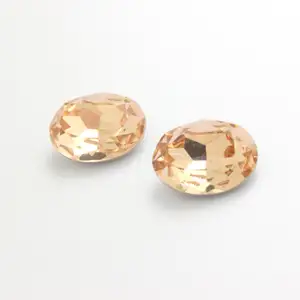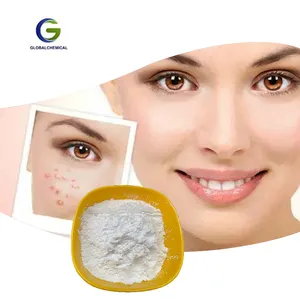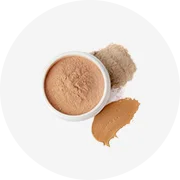आपके उद्योग में लोकप्रिय





कंकड़ धोने पत्थर आकार के प्रकार और रंगीन बजरी कंकड़ पत्थर उद्यान के लिए ग्लास मोज़ेक पत्थर कंकड़ शिल्प सामग्री
₹46.76 - ₹72.27
न्यूनतम ऑर्डर: 2 किलोग्राम



पेबल चट्टानों के आपूर्तिकर्ता उच्च गुणवत्ता वाले सफेद पेबल पत्थर/पेबल चट्टानों के प्राकृतिक राल बॉन्ड बजरी
₹6,375.99 - ₹9,351.45
न्यूनतम ऑर्डर: 2 टन







प्राकृतिक समग्र बजरी और कुचला हुआ पत्थर विभिन्न आकार 4-6 मिमी 6-9 मिमी 10-20 मिमी 20-40 मिमी
₹4,760.74 - ₹6,375.99
न्यूनतम ऑर्डर: 2 टन





थोक मूल्य सिंथेटिक ढीले पत्थर रंगीन अंडाकार आकार 4*6 मिमी ग्लास ढीले रत्न शिप करने के लिए तैयार
शिप करने के लिए तैयार
 शिप करने के लिए तैयार
शिप करने के लिए तैयार₹5.11 - ₹85.02
न्यूनतम ऑर्डर: 500 नग
शिपिंग प्रति टुकड़ा: ₹6.81







गर्म बिक्री थोक प्राकृतिक काले लाल कैलोरी वाले ज्वालामुखी रॉक मूल्य उद्यान भवन सजावट अरोमाथेरेपी वाहक
₹408.07 - ₹425.07
न्यूनतम ऑर्डर: 200 किलोग्राम







थोक प्राकृतिक खनिज थोक किसी न किसी रूबी Zoisite Tumbled पत्थर कीमत
₹850.14 - ₹1,530.24
न्यूनतम ऑर्डर: 2 किलोग्राम





प्राकृतिक चकमक पत्थर और प्राकृतिक पॉलिश ग्रे चकमक पत्थर रत्न सादे Cabochon ढीला रत्न लॉट मिक्स आकार आकार के लिए यहूदी
₹42.51 - ₹59.51
न्यूनतम ऑर्डर: 50 ग्राम






पत्थर से भरा हुआ हरा मलकाइट प्राकृतिक क्रिस्टल टम्बल उपचार बिक्री के लिए थोक टम्बल एगेट
₹5,950.93 - ₹7,226.13
न्यूनतम ऑर्डर: 2 किलोग्राम
शिपिंग प्रति टुकड़ा: ₹1,035.47











बिक्री के लिए उच्च गुणवत्ता चमकदार चमक अति सुंदर सुंदर कांच कंकड़ पत्थर
₹340.06 - ₹680.11
न्यूनतम ऑर्डर: 500 किलोग्राम






प्राकृतिक रंग अंधेरे में चमक कुचल छिल घर और उद्यान के लिए बजरी पत्थर भूनिर्माण सजावट
₹1,444.38 - ₹1,699.42
न्यूनतम ऑर्डर: 25 किलोग्राम












सर्वश्रेष्ठ विक्रेता पूरे बिक्री बर्फ सफेद अंडा SHC समूह से हुई पत्थर आपूर्तिकर्ता
₹7,651.19 - ₹8,501.32
न्यूनतम ऑर्डर: 25 मीट्रिक टन






मिस्र उच्च गुणवत्ता चकमक कंकड़-चकमक कंकड़ उच्च पहनने दर, सिरेमिक पीस मीडिया प्राकृतिक पत्थर 40mm-60mm 1ton बड़ा बैग
₹85.02 - ₹17,002.64
न्यूनतम ऑर्डर: 55 टन






रंगीन कंकड़ पत्थर रंगे पक्की सड़क पत्थर मछलीघर सजावट के लिए रसीला पौधों
₹17,002.64 - ₹30,604.75
न्यूनतम ऑर्डर: 2 मीट्रिक टन






शीर्ष गुणवत्ता परिदृश्य सफेद कंकड़, स्नो व्हाइट परिदृश्य में कंकड़ पत्थर बड़ा कोयला और कंकड़
₹8,076.26 - ₹8,926.39
न्यूनतम ऑर्डर: 50 टन





प्राकृतिक शक्की क्वार्ट्ज हथेली पत्थर Smokey क्वार्ट्ज कंकड़ हीलिंग क्रिस्टल और पत्थर जड़ चक्र पत्थर
₹4,335.68 - ₹4,760.74
न्यूनतम ऑर्डर: 5 किलोग्राम






वियतनाम के लिए प्राकृतिक काले कंकड़ शीर्ष गुणवत्ता Tumbled पत्थर कंकड़ उद्यान परिदृश्य सजावट आउटडोर ग्रे कंकड़ पत्थर
₹6,801.06 - ₹6,971.09
न्यूनतम ऑर्डर: 20 टन






हीरा टांकना मशरूम सिर चमकाने पत्थर कंकड़ Cobblestone संगमरमर घर्षण उपकरण
₹544.09 - ₹782.13
न्यूनतम ऑर्डर: 1 नग






Tumbled पत्थर प्राकृतिक उच्च गुणवत्ता akik liqued रंग पत्थर प्राकृतिक गोमेद बहुरंगा पॉलिश कंकड़ घर की सजावट के लिए
₹34,005.28
न्यूनतम ऑर्डर: 1 मीट्रिक टन






2024 चीनी फैक्ट्री टम्बल स्टोन एगेट स्टोन कंकड़ सॉकेट लाल अर्ध-कीमती पत्थर शिल्प
₹850.14 - ₹2,125.33
न्यूनतम ऑर्डर: 10 किलोग्राम
शिपिंग प्रति टुकड़ा: ₹404.67












सस्ते प्राकृतिक भूनिर्माण पत्थर काली नदी रॉक पॉलिश कंकड़ पत्थर चमकाने
₹11,901.85 - ₹15,727.44
न्यूनतम ऑर्डर: 5 टन








सस्ते भूनिर्माण प्राकृतिक ढीला कंकड़ पत्थर काले बगीचे के लिए
₹10,626.65 - ₹11,476.78
न्यूनतम ऑर्डर: 25 टन






कंकड़ पत्थर सजावट Tumbled ग्रे कंकड़ पत्थर बड़ा आकार भूनिर्माण के लिए आउटडोर पेवर्स Tumbled पत्थर कंकड़
₹4,675.73 - ₹5,100.80
न्यूनतम ऑर्डर: 24 मीट्रिक टन






गर्म SALELandscape सजावट सड़क कंकड़ नदी पत्थर विभिन्न मिश्रण आकार/रंग प्राकृतिक बारिश फूल बड़ा कोयला और कंकड़ पत्थर
₹5,950.93 - ₹7,651.19
न्यूनतम ऑर्डर: 28 टन






वियतनाम उच्च गुणवत्ता काले कंकड़ छोटे/बड़ा आकार कंकड़ बिक्री पर Unpolished प्राकृतिक पत्थर कंकड़ पत्थर
₹5,525.86 - ₹6,205.97
न्यूनतम ऑर्डर: 20 टन








फैक्टरी प्रत्यक्ष चकमक कंकड़ प्राकृतिक पत्थर डिस्काउंट कीमत के साथ 40mm-60mm 1ton बड़ा बैग काहिरा खनिजों आधुनिक
₹85.02 - ₹17,002.64
न्यूनतम ऑर्डर: 55 टन






प्राकृतिक पीले पेबल पत्थर निर्माता स्विमिंग पूल ड्राइववे फर्श सजावटी नदी पेबल पत्थर 30 50 मिमी कीमत
₹11,816.84 - ₹25,418.95
न्यूनतम ऑर्डर: 25 टन






शीर्ष गुणवत्ता के गर्म बेचने उद्यान सबसे अच्छा प्राकृतिक सफेद कंकड़ पत्थर बेचने मछली मछलीघर सफेद संगमरमर के लिए बजरी कंकड़
₹8,076.26 - ₹8,926.39
न्यूनतम ऑर्डर: 50 टन





गुलाबी प्राकृतिक पत्थर कंकड़ पत्थर बगीचे और घर की सजावट के लिए बिक्री के लिए कीमतों
₹6,631.03 - ₹7,651.19
न्यूनतम ऑर्डर: 20 टन






काले Tumbled कंकड़ पत्थर काले डार्क कंकड़ चट्टानों वियतनाम आपूर्तिकर्ता
₹7,651.19 - ₹8,501.32
न्यूनतम ऑर्डर: 24 मीट्रिक टन
पेबल पत्थर 40 मिमी के बारे में
वे सरल हो सकते हैं, वे रंगीन हो सकते हैं, लेकिन सभी पेबल पत्थर 40 मिमी। पर अनूठे हैं। बस एक सही खोजने के लिए ब्राउज़ करने के लिए एक अद्भुत संग्रह है। बड़े और बोल्ड या सूक्ष्म और असतत हैं। भले ही वांछित देखो, पेबल पत्थर 40 मिमी। अच्छी तरह से बना रहे हैं और उचित कीमत है। यह वास्तव में खरीदारों का स्वर्ग है।
पेबल पत्थर 40 मिमी के पीछे की अवधारणा। सीबीडी को गर्म करना और वाष्प को अंदर लेना है। एक बुनियादी और सरल दृष्टिकोण एक डिस्पोजेबल इकाई है। ये किसी की पसंद के आधार पर सुगंधित तेल से पहले से भरे जा सकते हैं। ये सरल हो सकते हैं, लेकिन उन्हें उबाऊ नहीं होना चाहिए। विक्रेताओं में से कई बड़े पर्याप्त ऑर्डर पर अनुकूलित मुद्रण और पैकेजिंग प्रदान करते हैं। यह रिटेलर और थोक व्यापारी को ब्रांड बनाने की अनुमति देता है क्योंकि वे फिट होते हैं। से चुनने के लिए भी कई रंग हैं।
यह गैर-डिस्पोजेबल पेबल पत्थर 40 मिमी है। यह काफी सुरुचिपूर्ण और विस्तृत हो सकता है। उनमें से ज्यादातर में रिचार्जेबल बैटरी सिस्टम है। बैटरी सिरेमिक हीटिंग तत्व को शक्ति प्रदान करती है। कुछ के पास वोल्टेज बढ़ाने के लिए एक डायल भी है, जो सीबीडी वाष्प की मात्रा को प्रभावित करता है। जैसा कि व्यावहारिक हो सकता है, यह सजावट है जो हमेशा ध्यान देने योग्य है। वेप लगभग ताश के पत्तों के आकार के होते हैं, इसलिए चित्रों, डिजाइनों और लोगो के लिए बहुत जगह होती है। कल्पना वह सीमा है जो इकाइयों पर मुद्रित की जा सकती है।
पेबल पत्थर 40 मिमी पर सर्वोत्तम सौदों को खोजने के लिए, बाहर की जाँच करें। चाहे वह डिस्पोजेबल इकाई हो या कुछ समय के लिए रखने के लिए, चुनने के लिए एक विशाल चयन है। उच्च गुणवत्ता वाले उत्पादों और उत्कृष्ट मूल्य निर्धारण के साथ, कोई भी आराम कर सकता है और खुद का आनंद ले सकता है।
पेबल पत्थर 40 मिमी के पीछे की अवधारणा। सीबीडी को गर्म करना और वाष्प को अंदर लेना है। एक बुनियादी और सरल दृष्टिकोण एक डिस्पोजेबल इकाई है। ये किसी की पसंद के आधार पर सुगंधित तेल से पहले से भरे जा सकते हैं। ये सरल हो सकते हैं, लेकिन उन्हें उबाऊ नहीं होना चाहिए। विक्रेताओं में से कई बड़े पर्याप्त ऑर्डर पर अनुकूलित मुद्रण और पैकेजिंग प्रदान करते हैं। यह रिटेलर और थोक व्यापारी को ब्रांड बनाने की अनुमति देता है क्योंकि वे फिट होते हैं। से चुनने के लिए भी कई रंग हैं।
यह गैर-डिस्पोजेबल पेबल पत्थर 40 मिमी है। यह काफी सुरुचिपूर्ण और विस्तृत हो सकता है। उनमें से ज्यादातर में रिचार्जेबल बैटरी सिस्टम है। बैटरी सिरेमिक हीटिंग तत्व को शक्ति प्रदान करती है। कुछ के पास वोल्टेज बढ़ाने के लिए एक डायल भी है, जो सीबीडी वाष्प की मात्रा को प्रभावित करता है। जैसा कि व्यावहारिक हो सकता है, यह सजावट है जो हमेशा ध्यान देने योग्य है। वेप लगभग ताश के पत्तों के आकार के होते हैं, इसलिए चित्रों, डिजाइनों और लोगो के लिए बहुत जगह होती है। कल्पना वह सीमा है जो इकाइयों पर मुद्रित की जा सकती है।
पेबल पत्थर 40 मिमी पर सर्वोत्तम सौदों को खोजने के लिए, बाहर की जाँच करें। चाहे वह डिस्पोजेबल इकाई हो या कुछ समय के लिए रखने के लिए, चुनने के लिए एक विशाल चयन है। उच्च गुणवत्ता वाले उत्पादों और उत्कृष्ट मूल्य निर्धारण के साथ, कोई भी आराम कर सकता है और खुद का आनंद ले सकता है।







































